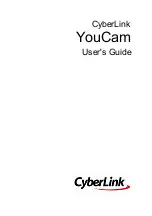
Getting Started with EPICenter
EPICenter Reference Guide
30
The following list describes all the EPICenter features available; depending on the role assigned to your
user account, and the features enabled or disabled by the EPICenter administrator, some of these
features may not be available.
●
Inventory
: The Inventory Manager, where you can discover devices on your network, and set up
device groups so you can manage network elements in sets (as groups of devices) rather than
managing them individually.
●
Alarm
: The Alarm Manager, where you can view and browse alarms that have occurred on your
network devices, as well as define alarms and the actions that should occur when an alarm happens.
This button also indicates that a new alarm has been received by displaying its label in red text
instead of black text.
●
Config
: The Configuration Manager, where you can upload and download switch configuration files
and baseline configuration files to your managed devices.
●
Firmware
: The Firmware Manager, where you can obtain and manage the most current
ExtremeWare software and BootROM images for your switches and modules, and download those
images to your devices.
●
Groups
: The Grouping Manager, where you can set up groups of resources, including Port groups
and groups of users or hosts, and can import resources from external source such as a NT Domain
Controller or LDAP directory.
●
Find IP/MAC
: The IP/MAC Address Finder applet, where you can search for the ports associated
with one or more MAC or IP addresses, or identify the IP or MAC addresses connected to a set of
ports.
●
Telnet
: An interactive Telnet application where you can create and run command-line macros on
multiple devices in one operation. You can also establish Telnet sessions with individual switches,
both Extreme Networks and third-party devices.
●
RT Stats
: The Real Time statistics applet, that provides graphs of various device and port statistics.
●
Topology
: The Topology feature, which provides a hierarchical, logical map-based view of your
network topology, including the status of alarms propagated up through the hierarchy.
●
VLAN
: The VLAN Manager, where you can set up and manage VLANs.
●
ESRP
: The ESRP Monitor, which lets your view your ESRP-enabled switches and VLANs.
●
Admin
: The Administration feature, where a user with Administrator access can administer
EPICenter user accounts and roles, configure RADIUS authentication, and configure many aspects of
the EPICenter server, including the availability of EPICenter applets. Other users can change their
own password using this applet.
●
Reports
: The browser-based Dynamic Reports feature, where you can run a number of pre-defined
HTML-based reports from data in EPICenter’s inventory database. You can also define your own
reports.
●
Logoff
: The Logoff button ends your session and returns you to the Login window.
NOTE
You must be logged in as a user with an Administrator, Manager, or other role that provides read/write access to a
feature in order to use most of the functions of that feature. Users with a Monitor role can view status and statistics
in most features, but cannot set up or change EPICenter or device configurations.
Summary of Contents for EPICenter 6.0
Page 14: ...EPICenter Reference Guide 14 ...
Page 18: ...Preface EPICenter Reference Guide 18 ...
Page 19: ...1 EPICenter Basic Features ...
Page 20: ......
Page 24: ...EPICenter Overview EPICenter Reference Guide 24 ...
Page 44: ...Getting Started with EPICenter EPICenter Reference Guide 44 ...
Page 100: ...The Inventory Manager EPICenter Reference Guide 100 ...
Page 140: ...The EPICenter Alarm System EPICenter Reference Guide 140 ...
Page 172: ...Configuration Manager EPICenter Reference Guide 172 ...
Page 196: ...The Firmware Manager EPICenter Reference Guide 196 ...
Page 220: ...The Interactive Telnet Feature EPICenter Reference Guide 220 ...
Page 250: ...The Grouping Manager EPICenter Reference Guide 250 ...
Page 276: ...Real Time Statistics EPICenter Reference Guide 276 ...
Page 342: ...Using the VLAN Manager EPICenter Reference Guide 342 ...
Page 348: ...The ESRP Monitor EPICenter Reference Guide 348 ...
Page 446: ...EPICenter Reports EPICenter Reference Guide 446 ...
Page 447: ...2 Advanced Upgrade Features ...
Page 448: ......
Page 480: ...EAPS Protocol Monitoring and Verification EPICenter Reference Guide 480 ...
Page 508: ...Using the Policy Manager EPICenter Reference Guide 508 ...
Page 525: ...3 Appendices ...
Page 526: ......
Page 542: ...EPICenter Backup EPICenter Reference Guide 542 ...
Page 564: ...Voice over IP Manager EPICenter Reference Guide 564 ...
Page 580: ...EPICenter Reference Guide 580 ...
















































